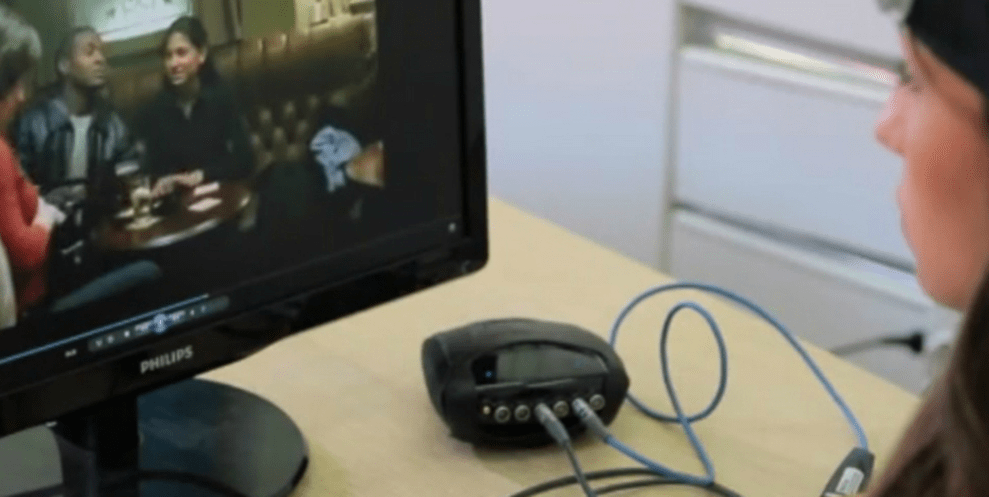We have recorded the physiological reactions of 22 participants to the observation of anti-smoking Public Service Announcements, by using electroencephalography as well as, heart rate and skin conductance.
Quick Navigation
AIM
The aim of this research was to measure the instinctive response of 22 subjects between 16 and 19 years old, during the observation of anti-smoking campaigns, aired in Europe and the USA between 1998 and - 2015.
The sample was subdivided into:
- 7 non-smokers
- 9 light smokers (less than 5 cigarettes per day)
- 6 heavy smokers (more than 5 cigarettes per day)

The detected and analyzed indexes were the following:
- Approach-Withdrawal Index (WA), related to the cognitive activity originated in the cerebral cortex, associated with judgments about what individuals see and hear (Davidson et al., 1990) (EEG)
- Emotional index, which measures the degree of emotional involvement referred to a specific stimulus (HR, GSR)
- Effort index, which measures the brain brain workload fatigue level in decoding information (EEG)
TOOLS
EXPERIMENT

Three different smoking campaign groups have been selected: "Effective Campaigns", "Ineffective Campaigns" ( both classified on the basis of the results) and "Awarded Campaigns” (classified on the basis of the prizes received by specialized committees).
The experimental protocol provided that each group watched 6 different anti-smoking advertising, specifically:
- 3 commercials
- 3 images
The participants, sitting in front of a computer screen, then had to watch the video with commercials and images.
FIRST RESULTS

With regard to the Approach-Withdrawal index, both the commercials and the images belonging to the "awarded" group have obtained higher average values.

For the efforts index, images belonging to the "effective" group reported lower values, instead the commercials belonging to the "effective" group reported higher values than the other two.

Finally, for the emotional index, both the images and the commercials belonging to the "effective" group elicited higher values.
EVIDENCE
These first results have shown that the "effective" group provoke higher values for the emotional index. As far as it concerns the images, the "effective" group showed the lowest values of cognitive engagement. This means that the campaigns of this group are most emotionally engaging, and - in the case of images - show a simpler and more immediate communication.








